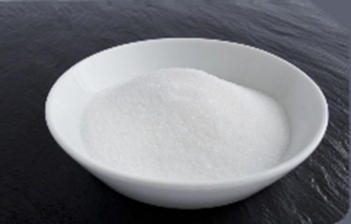The Role and Impact of Sodium Tripolyphosphate (STPP) in Food Processing
Pendahuluan
Sodium Tripolyphosphate (STPP) is a versatile food additive widely used to enhance the quality and shelf life of various food products. This white crystalline powder acts as a pouring agent, quality improver, and stabilizer, significantly contributing to the food industry’s efficiency. However, excessive consumption of STPP can have negative health implications, necessitating regulated usage.
Functions of Sodium Tripolyphosphate in Food
1. Puffing Agent
STPP acts as a puffing agent by reacting with water in food to produce carbon dioxide bubbles, increasing the volume and fluffiness of baked goods. This reaction makes breads, cakes, and doughs softer and enhances their taste, contributing to a better overall texture and mouthfeel.
2. Preventing Water Loss
One of the key roles of STPP is to form stable complexes with water in food, reducing moisture loss and evaporation. This is especially important in meat products and seafood, where it helps retain the original moisture content, ensuring a tender and juicy texture.
3. Maintaining Food Color
STPP interacts with metal ions in food to prevent discoloration, keeping the food’s appearance bright and appealing. This property is particularly beneficial for meat products, seafood, and aquatic products, where it delays color changes and fading.
4. Stabilizing pH Levels
As a weak alkaline substance, STPP neutralizes acidic ingredients in food, regulating its pH level. This stabilization is crucial for enhancing the overall stability of food products and extending their shelf life.
5. Acting as an Antioxidant
STPP binds with oxygen, reducing oxidative reactions in food and inhibiting deterioration and spoilage. This antioxidant property is particularly important for foods prone to oxidation, such as oils and meat products.
Potential Health Risks of Excessive STPP Intake
While STPP offers numerous benefits in food processing, long-term excessive intake can pose health risks. Studies have shown that overconsumption of STPP may lead to:
- Dysfunction of intestinal flora
- Damage to intestinal mucosa
- Increased burden on the kidneys
- Negative effects on bone health
To mitigate these risks, it is crucial to adhere to relevant national standards and regulations regarding the use of STPP in food products. Ensuring reasonable and controlled usage is essential for maintaining consumer health.
Kesimpulan
Sodium Tripolyphosphate (STPP) plays a vital role in the food industry, offering various functions such as enhancing volume and fluffiness, maintaining moisture, preserving color, regulating pH levels, and acting as an antioxidant. However, it is imperative to use STPP responsibly and within regulated limits to avoid potential health risks associated with excessive intake.
PERTANYAAN YANG SERING DIAJUKAN
What types of foods commonly contain STPP?
- STPP is commonly used in baked goods, meat products, seafood, and processed foods to improve texture, moisture retention, and color stability.
How does STPP help in maintaining food color?
- STPP binds with metal ions in food, reducing their impact on color, which helps maintain a bright and appealing appearance.
Are there any health risks associated with STPP?
- Excessive long-term intake of STPP can lead to intestinal flora dysfunction, mucosal damage, increased kidney burden, and potential bone health issues.
Is the use of STPP regulated?
- Yes, the use of STPP is regulated by national standards and regulations to ensure it is used safely and within acceptable limits.
Can STPP act as an antioxidant in food?
- Yes, STPP can bind with oxygen, reducing oxidative reactions and inhibiting food deterioration and spoilage.

